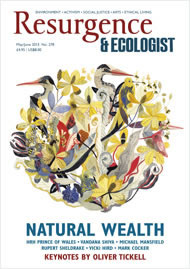According to quantum physics, there is no scientific basis for distinguishing between mind and matter. This matches the assertions of many ancient spiritual traditions. The yoga philosophy states it succinctly: “The world is as you see it.”
Quantum physics seems to have moved on from the idea of pure objectivity: subject and object are inseparable, which paves the way to healing the rift between science and spirituality. Therefore science needs to embrace the wisdom of many of the world’s vast scriptural treasures, which prioritise the validity of personal, subjective experience.
The yogic tradition in particular contains numerous techniques for testing its own hypotheses; the challenge to traditional science lies in the fact that the realm of proof begins in the subjective, moves into a place where subjective and objective merge, and ends where neither subjective nor objective exists.
Yet proof there is: in the ‘pudding’ of experience – that is, Being, Consciousness and Bliss (in Sanskrit, Sat, Chit and Ananda). It is here that duality is transcended and wholeness and completeness is realised.
Where does this leave us when it comes to changing the world? If mind and matter are one, then why are we not able to change the world simply by changing our minds? Well, we can… But in order to change something, first we need to understand what it is that we want to change.
If we do not experience mind and matter as one, then clearly our understanding of the world is incomplete. At the surface level, we cultivate ideas and put them into practice over time, thereby gradually changing matter. However, there is a deeper level of mind that manifests matter: that is the universal mind.
By letting go of all the images and ideas of separation that we have accumulated, including those of ‘world’, ‘Earth’, ‘sun’, ‘Gaia’, ‘universe’, ‘self’, and so on, we discover that reality is a flow of undifferentiated and limitless energy – which is precisely in accord with the findings of both yoga philosophy and quantum physics.
In the depths of a still mind, a vast beauty and wisdom is revealed – and from that perspective one might wonder why we would question the way in which those qualities choose to manifest…
Does this mean we should sit around doing nothing and let the world do what it will? No: we are active participants, like it or not. As Krishna tells Arjuna in the Bhagavad Gita, the way to align yourself with the universal mind is by ‘doing your duty’ at the individual level – which includes the range of environmental, social and spiritual work needed to heal and uplift this world and all beings therein.
Crucially, however, yoga philosophy says that this ‘duty’ must be performed without attachment to outcomes; this is the
aligning factor. Any attachment to outcomes, desire for success or fear of failure, keeps the mind from being still and present. Action with attachment leads to duality, whereas action without attachment leads to wholeness: to a free flow of energy.
What then will motivate action, if not the desire for outcomes? Well, what motivates the growth of a human body? The rotation of the Earth? The shining of the sun? The Big Bang?
When we rediscover our oneness with that powerful, mysterious and – dare I say? – divine energy, then we are in touch with the purest form of love, a love that is both motive and essence. Then we act without acting, we know without knowing, we love without loving – we are intoxicated and at peace… and the world keeps on changing, as it always has.







